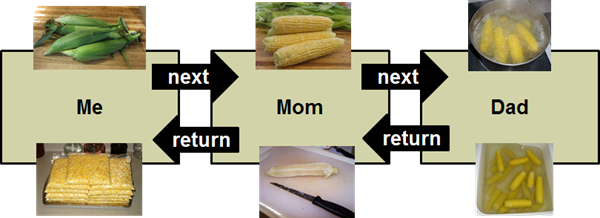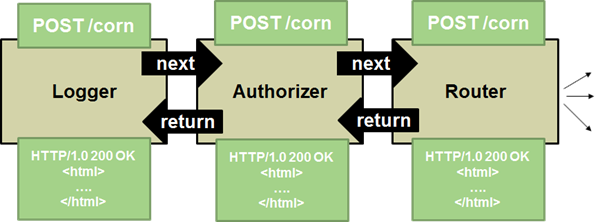When I was a boy, my parents would select a weekend every late summer to freeze corn for our Sunday meals in the winter months. The process started early in the morning when dad would drive us to a local farm. We’d purchase a few hundred ears of un-shucked corn and load the corn into our own laundry baskets to bring them home.
Once home, we’d setup a processing pipeline for the corn. I was first in the pipeline. I’d pick an ear from the basket, shuck off the squeaky green husk, and hand the ear to mom. Mom would gently remove silk from the cob with a soft vegetable brush and not so gently eradicate damaged kernels with a palm-sized paring knife. My mom passed the corn to my dad, who would bundle up a dozen or so ears and drop them into boiling water. After a few minutes of blanching, my dad would transfer the hot corn into an ice bath and then pass the ears back up the pipeline to my mom.
Mom would use a simple device my father made to help cut the corn from the cob. The device was a small hardwood board, about ½ inch thick, with a nail through the middle. Pushing the cob onto the nail made for easier cutting with a boning knife, as the cob would stand up without the need to place any fingers in the cutting area. Mom could then sweep the cut kernels off the board and into a bowl where it was my responsibility to measure 2 cups of corn into freezer bags, and keep count of the total number of bags.

The corn started with me un-husked and returned to me as whole cut kernels in puddle of sweet, milky juice. Well, not all the corn made the entire trip up and down the family food processing line. If I spotted an obviously bad ear, I always had the option of throwing the ear away instead of passing the ear to mom.
Substitute “HTTP request” for corn and “middleware component” for me, mom, and dad, and you’ll have an idea of how the middleware pipeline works in ASP.NET. Each component has a job to perform when the component receives a request. Each component can perform some work and optionally pass the request to the next component. Each HTTP transaction can visit each piece of middleware once on the way in, and once on the way out.

Now that I’ve made the analogy, it’s hard to look at any Startup.cs and not think about being a boy again in August.

 OdeToCode by K. Scott Allen
OdeToCode by K. Scott Allen